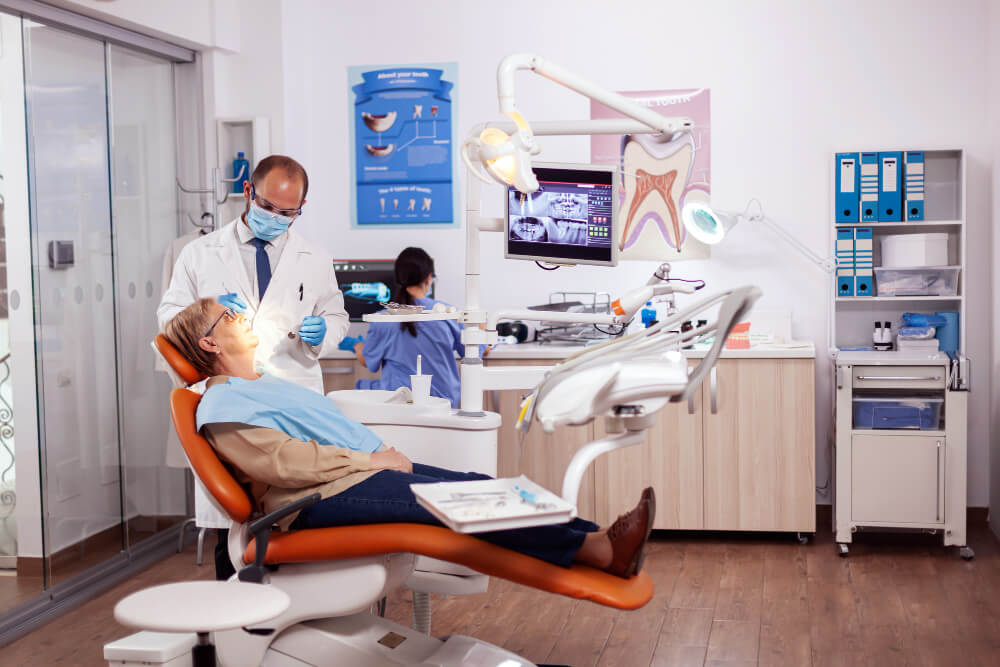
How to Respond to Patient Reviews on Social Media Professionally
The Hidden Impact of Review Responses on Your Dental Practice Growth
Have you ever wondered why some dental practices seem to effortlessly maintain stellar online reputations while others struggle despite providing excellent care? The difference often lies not in the reviews themselves, but in how practices respond to them.
Every patient review—whether glowing praise or scathing criticism—creates a public viewing opportunity that potential patients use to judge your practice. Most dentists focus solely on generating positive reviews, overlooking the fact that your responses actually carry more weight with potential patients than the original reviews. According to recent studies, 89% of potential patients read businesses’ responses to reviews, and 45% say they’re more likely to visit a business that responds thoughtfully to negative feedback.
In this comprehensive guide, we’ll reveal exactly how to craft responses that transform even your most challenging reviews into powerful marketing opportunities while maintaining HIPAA compliance and professional standards. Let’s turn your review responses into one of your practice’s most valuable patient acquisition tools.
Why Your Review Response Strategy Is More Critical Than Ever
The landscape of dental marketing has dramatically shifted in recent years:
- 76% of patients now use online reviews as their first step when seeking a new dentist
- Google and Facebook algorithms increasingly prioritize businesses that actively engage with reviews
- Potential patients read an average of 7 reviews before trusting a practice
- 97% of patients who read reviews also read responses from the business
Your review responses serve multiple critical functions:
- They demonstrate your communication style to potential patients
- They showcase how you handle problems when they arise
- They allow you to control the narrative around negative experiences
- They create opportunities to highlight your practice values and commitment to care
According to research from Dental Growth Ninjas, practices that implement strategic review response protocols see up to 30% higher new patient conversion rates compared to those that respond inconsistently or not at all.
The Professional’s Framework for Responding to Positive Reviews
While most dentists focus their energy on damage control for negative reviews, your responses to positive feedback offer equally valuable marketing opportunities:
1. Personalize Each Response
Generic “thank you” responses miss vital relationship-building opportunities. Instead:
- Address the patient by name (first name only for HIPAA compliance)
- Reference specific points from their review without confirming they’re a patient
- Customize each response to sound authentic and personal
For example: “Thank you so much for these kind words, Sarah! Our team works hard to create the comfortable experience you described, and we’re thrilled you noticed the little touches like our warm blankets and noise-canceling headphones.”
2. Reinforce Your Practice Values
Use positive review responses to subtly highlight what makes your practice special:
- Emphasize team collaboration when patients mention staff by name
- Underscore your commitment to patient comfort when comfort is praised
- Highlight your investment in technology when advanced procedures are mentioned
- Reinforce your accessibility when convenience factors are appreciated
According to the Dental Growth Ninjas blog, practices that strategically reinforce their unique value propositions in review responses see 22% higher engagement on those reviews.
3. Extend the Relationship
Every positive review response should include an invitation to deepen the relationship:
- Thank patients for taking time to share their experience
- Invite them to follow your practice on other social platforms
- Encourage them to take advantage of other services you offer
- Express looking forward to seeing them at their next visit
Remember: responding to positive reviews isn’t just about acknowledging praise—it’s about strengthening patient loyalty and turning satisfied patients into practice advocates.
The CARE Method for Handling Negative Reviews Professionally
Negative reviews trigger emotional responses, but successful practices follow the CARE framework to transform criticism into opportunity:
1. C – Compassion First
Begin every response to a negative review with genuine compassion:
- Acknowledge the patient’s feelings without judgment
- Thank them for taking time to provide feedback
- Express authentic concern about their experience
- Avoid defensive language or explanations in your opening
For example: “Thank you for sharing your concerns about your recent experience. Patient comfort is our top priority, and we’re truly sorry to hear we fell short of providing the excellent care we strive for.”
2. A – Address the Issue (Without Violating HIPAA)
Next, address the specific concerns without confirming the reviewer is a patient:
- Speak to the general issue without acknowledging specific treatments
- Never include protected health information or treatment details
- Provide context when appropriate without contradicting the patient
- Focus on your practice policies rather than specific incidents
HIPAA-compliant example: “While we can’t discuss specific appointments online, we always aim to communicate treatment options and associated costs clearly before beginning any procedures.”
3. R – Resolve Offline
Always move the conversation to a private channel:
- Provide a direct contact method (office phone and specific person to ask for)
- Express genuine interest in making things right
- Avoid asking for another chance in public responses (this can appear manipulative)
- Set clear expectations about next steps
For example: “We would welcome the opportunity to address your concerns personally. Please contact our office at (555) 123-4567 and ask for Maria, our patient advocacy coordinator, who can give this matter her full attention.”
4. E – End Positively
Conclude your response by reinforcing your practice values:
- Restate your commitment to patient satisfaction
- Thank them again for their feedback
- Frame the situation as an opportunity for practice improvement
- Keep your response concise (under 100 words is ideal)
Research shows that 45% of patients report having a more positive impression of businesses that respond thoughtfully to negative reviews—even when they never see a resolution posted publicly.
Critical Mistakes to Avoid in Your Review Responses
Even well-intentioned dentists often make these potentially costly errors:
- Confirming the reviewer is a patient (HIPAA violation with potential $50,000+ penalties)
- Copying and pasting identical responses (appears inauthentic and automated)
- Responding when emotionally triggered (always wait 24 hours after a negative review)
- Including excessive marketing language (appears tone-deaf, especially in negative review responses)
- Requesting review removal in public responses (signals you don’t value feedback)
- Delaying responses beyond 48 hours (suggests the feedback isn’t important to you)
According to dental reputation management experts at Dental Growth Ninjas, the practices with the strongest online reputations respond to all reviews—positive and negative—within 24 hours using customized, HIPAA-compliant language.
Implementing Your Review Response System
Create a sustainable review management process with these steps:
- Assign clear responsibility for monitoring and responding to reviews
- Create templated frameworks (not copy-paste responses) for common review types
- Establish notification systems to alert staff of new reviews
- Develop an escalation protocol for particularly concerning negative reviews
- Schedule monthly review analysis to identify trends and improvement opportunities
The most successful practices integrate review management directly into their morning huddle routine, ensuring no review goes unaddressed for more than 24 hours.
Transform Your Online Reputation Starting Today
Your review response strategy isn’t just about damage control—it’s a powerful opportunity to showcase your practice values, demonstrate your commitment to patient satisfaction, and build trust with potential patients who are researching your practice.
Begin by auditing your current reviews and responses across all platforms. Identify gaps where reviews have gone unanswered and prioritize responding to those first. Then implement your new response framework going forward, measuring improvements in both review sentiment and new patient conversions.
What challenges have you faced when responding to patient reviews? Have you found certain approaches more effective than others? Share your experiences in the comments below!
Ready to implement a systematic approach to review management that enhances your practice’s online reputation? Click here to discover how Dental Growth Ninjas can help you build a review response strategy that converts more potential patients into appointments.
This article was created by the team at Dental Growth Ninjas, specialists in helping dental practices attract their ideal patients through strategic reputation management and practice growth strategies. For more insights on dental marketing, visit our blog.


